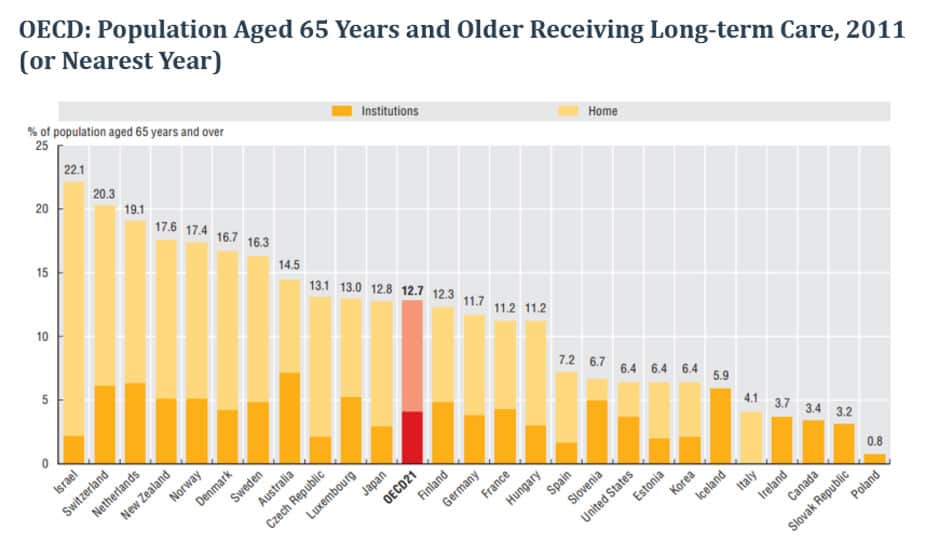Across the Organisation for Economic Cooperation and Development (OECD) member and partner countries included in the data, the share of the population over 80 years old will increase, on average, from 4 percent in 2010 to 10 percent by 2050. At 16 percent, Japan will see the largest percentage among the member countries, and Mexico, at 6 percent, the smallest. The percentage of the population aged 80 years and older rises from 4 percent in 2010 to 8 percent in 2050 in the United States.

At almost 3 percent, the Netherlands spends the most, as a share of GDP, on long-term health care across OECD countries. The United States spends 0.5 percent, and the OECD countries spend just under 1 percent on average. According to a 2013 OECD report on health indicators across member and partner countries, 6.4 percent of the United States population, aged 65 and older, received long-term care services in 2011, with approximately half of that population receiving institutional care and the other half receiving home-based care. Among the OECD countries, 12.7 percent received long-term care services, with 4 percent in institutional care, and 8.7 percent at home. Home-based care has increased in the U.S. between 2000 and 2011, but still lags behind other OECD countries.

Source: “Health at a Glance 2013: OECD Indicators,” Organisation for Economic Co-operation and Development. Available at http://www. oecd.org/els/health-systems/Health-at-a-Glance-2013.pdf.
Paige C. Worsham is Senior Policy Counsel with the North Carolina Center for Public Policy Research.
Aging Health & Human Services
